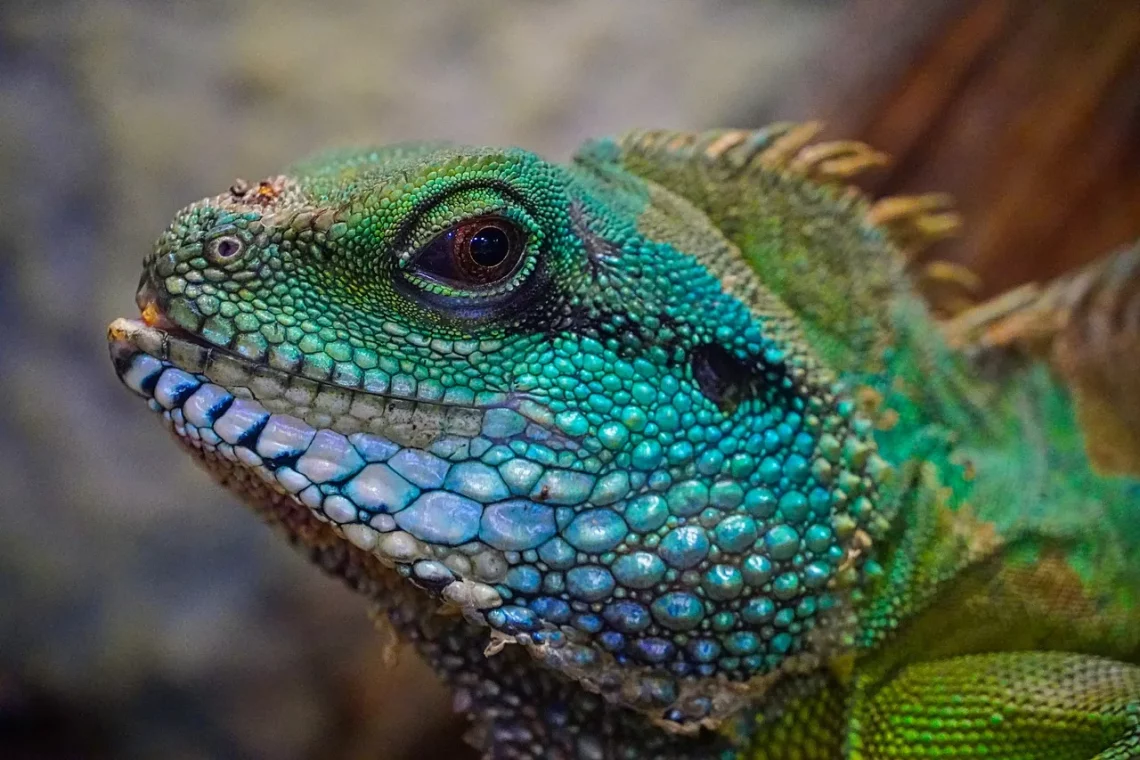
Can Bearded Dragons Eat Lettuce Safely and Healthily?
Bearded dragons, popular pets known for their unique appearance and friendly demeanor, require a carefully balanced diet to thrive. As omnivores, their diet consists of a mix of insects, vegetables, and fruits. However, many bearded dragon owners often find themselves wondering about the suitability of various foods, including leafy greens like lettuce. The question of whether bearded dragons can eat lettuce safely and healthily is a common concern among reptile enthusiasts.
Lettuce is often seen as a staple in human salads, but its nutritional value for reptiles is a topic of debate. While it may be tempting to offer lettuce as a quick and convenient green option, it’s essential to understand the implications of including it in a bearded dragon’s diet. The nutritional needs of these reptiles are quite specific, and not all greens provide the necessary vitamins and minerals required for their well-being.
Moreover, the type of lettuce and its preparation can significantly influence its digestibility and nutritional benefits. As a bearded dragon owner, it’s crucial to be well-informed about the dietary requirements of your pet. This knowledge not only ensures their health but also contributes to their longevity and overall happiness. Understanding what constitutes a balanced diet for bearded dragons is key to their care, and this includes knowing which greens are beneficial and which should be avoided.
Understanding Bearded Dragon Nutrition
To ensure the health and well-being of bearded dragons, it is vital to grasp the fundamentals of their nutritional needs. These reptiles thrive on a varied diet that includes a balance of protein, vegetables, and fruits. In the wild, bearded dragons consume a wide range of foods, from insects to leafy greens, which provides them with essential nutrients.
In general, bearded dragons require a diet rich in calcium, vitamins A, D3, and other vital nutrients. Calcium is especially important for their bone health, as a deficiency can lead to metabolic bone disease. The ratio of protein to greens in their diet changes as they mature; younger dragons need more protein for growth, while adults require more plant matter to maintain a healthy digestive system.
When it comes to greens, not all vegetables are created equal. Leafy greens are often recommended as a part of their diet. However, the nutritional profile varies significantly among different types of greens. For example, collard greens, mustard greens, and dandelion greens are often favored due to their high calcium content and overall nutritional value.
Lettuce, on the other hand, particularly iceberg lettuce, is often criticized for its low nutritional content. While it is high in water, it lacks essential vitamins and minerals that bearded dragons need. Therefore, while it can be offered occasionally as part of a varied diet, it should not be a primary component of their meals.
Being mindful of what goes into your bearded dragon’s diet is crucial. Always aim for a diverse array of foods that cater to their nutritional needs, and consult with a veterinarian who specializes in reptiles if you have any concerns about your pet’s diet.
Types of Lettuce and Their Nutritional Value
Lettuce comes in various varieties, each with its own set of nutritional attributes. The most common types include iceberg, romaine, and leaf lettuce. Understanding the differences among these varieties can help pet owners make informed decisions about what to offer their bearded dragons.
Iceberg lettuce is often the most widely recognized variety. However, it is notorious for being low in nutritional value. Iceberg contains a high percentage of water but lacks essential vitamins and minerals. Feeding this type of lettuce to a bearded dragon can lead to nutritional deficiencies over time if it becomes a staple in their diet.
Romaine lettuce, on the other hand, is a better option for bearded dragons. It contains more nutrients compared to iceberg, including vitamins A and C, as well as fiber. While it should still not be the primary green offered, romaine can serve as a healthier alternative when combined with other nutrient-rich vegetables.
Leaf lettuce, which includes varieties like red leaf and green leaf, falls somewhere in between iceberg and romaine in terms of nutritional value. It offers a bit more in terms of vitamins and minerals, but like all lettuces, it should be offered in moderation.
When incorporating any of these lettuces into a bearded dragon’s diet, it is crucial to wash the leaves thoroughly to remove any pesticides or contaminants. Additionally, it’s essential to chop the lettuce into manageable pieces to aid in digestion.
Ultimately, while some types of lettuce can be included in a bearded dragon’s diet, they should not be the mainstay. Focusing on more nutrient-dense greens and vegetables will provide a more balanced and healthy diet for your reptilian companion.
Safe Practices for Feeding Lettuce to Bearded Dragons
Feeding lettuce to bearded dragons can be done safely, but certain practices should be followed to ensure their health. As with any food, moderation is key. Lettuce should be viewed as an occasional treat rather than a primary food source.
When introducing lettuce or any new food into your bearded dragon’s diet, it’s best to start with small amounts. Monitor your pet for any adverse reactions, such as changes in appetite or digestive issues. If you notice any signs of distress or discomfort, discontinue feeding that specific type of lettuce and consult a veterinarian for guidance.
Preparation is also an important factor when feeding lettuce. Always wash the leaves thoroughly to eliminate any potential pesticides or chemicals. Using organic produce can further reduce the risk of exposure to harmful substances. After washing, chop the lettuce into small, bite-sized pieces. This makes it easier for your bearded dragon to eat and digest.
It’s essential to offer a variety of greens, rather than relying solely on lettuce. Incorporate other leafy greens that are higher in nutrients, such as collard greens, kale, and mustard greens. This variety will not only provide a broader spectrum of vitamins and minerals but will also keep mealtime interesting for your pet.
Finally, consider the overall balance of your bearded dragon’s diet. Ensure that they are receiving adequate protein from insects and a wide range of vegetables. This holistic approach to feeding will contribute to your bearded dragon’s health and longevity.
Conclusion: Lettuce in the Bearded Dragon Diet
In conclusion, while bearded dragons can eat lettuce, it should be done with caution and in moderation. The nutritional value of lettuce, especially types like iceberg, is limited, and it should not replace more nutrient-dense greens in their diet. Instead, it can serve as an occasional treat that adds variety to their meals.
As responsible pet owners, it is crucial to prioritize a balanced diet that meets the specific needs of bearded dragons. Incorporating a mix of high-quality greens, vegetables, and protein sources will ensure your pet thrives. Always be vigilant in observing your dragon’s health and behavior after introducing new foods.
Lastly, remember that every bearded dragon is unique, and dietary preferences may vary. Consulting with a veterinarian who specializes in reptiles can provide tailored advice that aligns with your pet’s specific health needs.
**Disclaimer:** This article is for informational purposes only and should not be considered medical advice. Always consult a veterinarian for health-related issues concerning your pet.




